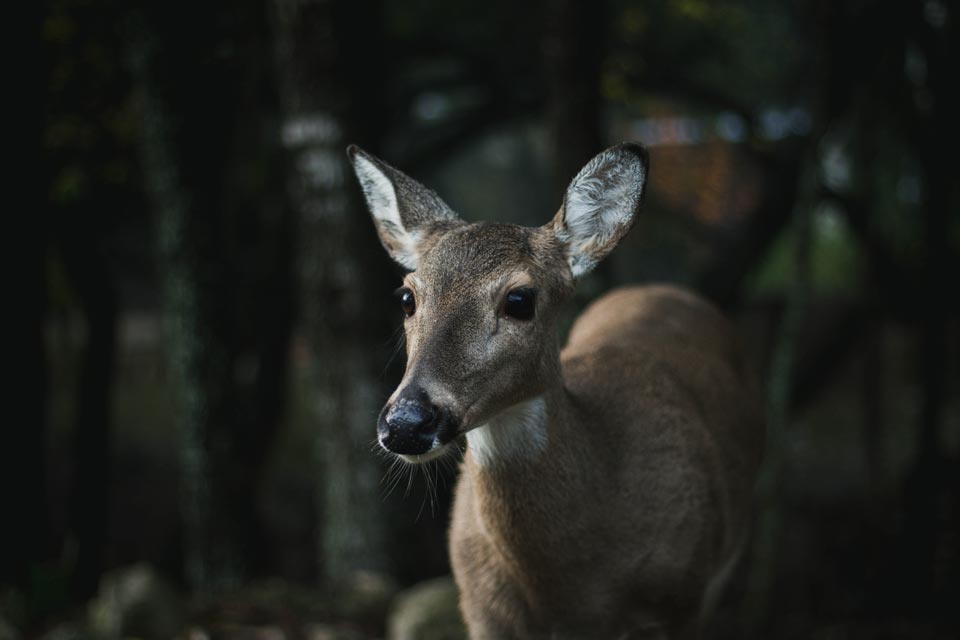Type “MSY” into google and the first thing that pops up is the Louis Armstrong New Orleans International Airport. Unfortunately, that’s not the MSY I’m talking about.
Scroll down to the third search result: MSY or maximum sustained yield. It isn’t nearly as fun or “easy.”
MSY is an idea that has been around for a long time – over 50 years. And if you can believe the assumptions, it has some profound implications on how we can manage wildlife populations to our benefit.
If you’re willing to put on your thinking cap you can impress your friends and coworkers at the next holiday gathering. We’ll tackle the basics this time. Next week I’ll “apply” it to deer management.
Under MSY we have to make some assumptions about how populations grow and respond to their environment. If we plotted a population that started with 2 animals (a male and a female – that sounds vaguely familiar), this is what its growth might look like.
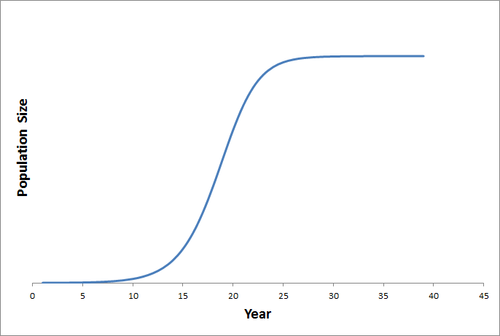
Notice how the population increases slowly the first 15 years, then increases rapidly during years 15-25, and then levels off. This is called a logistic growth curve. But all it means is that population growth has an upper limit.
The population grows slowly at first because there are not a lot of animals, but when their numbers do start to increase the population takes off like a rocket. Eventually, however, the population levels off because of some environmental limits to the population. Those limits might be space, food, etc.
That limit is called the Carrying Capacity of the habitat.
Carrying Capacity is the maximum number of animals the environment can support.
[A side note: You might ask how population growth slows. It can occur in two ways: fewer young are born or the mortality rate increases. For our purposes it doesn’t matter which occurs (or how) because all we care about is how many animals are alive at the end of each year]
Are you still with me? Great!
Now you have to really pay attention because this next part is the key to the whole idea of MSY.
Let’s take a close look at the curve at Years 12 and 13
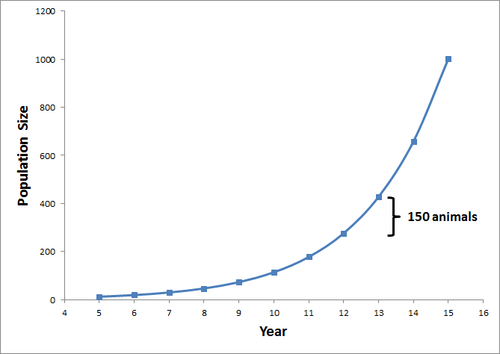
Notice how it increased by 150 animals. What if we harvested 150 animals? Every year. What would happen to the population?
That’s right, we would be stuck at a population size of about 275 animals, forever. And that would mean that we could have a sustained yield of 150 animals per year and have no effect on population size.
Now let’s look at a different part of the curve – Years 26 and 27
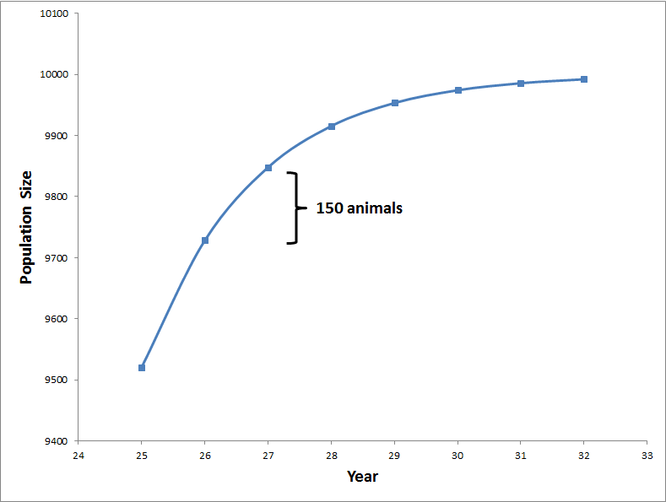
Here we see population growth is slowing and the population increases by 150 animals. So if we wanted to sustain the population at about 9,700 animals we can harvest 150 animals a year, forever. And the population will remain at 9,700 animals, forever.
Some of you astute readers out there are already inspecting other parts of the curve. What about the annual increases in years 14, 15, and 16? Or during years 25 and 26 in the second close-up graph?
Where is annual growth greatest? Ok, now stay with me. Let’s plot the annual change in population size as a function of year. Think of it like a speedometer and acceleration.
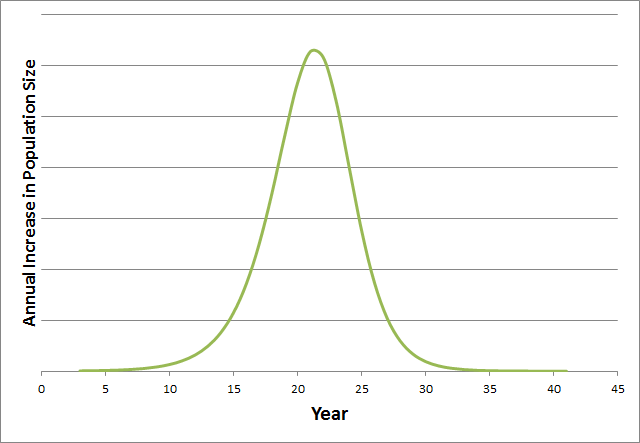
The greatest annual change in population size occurs in Year 22 when population size is half way to carrying capacity. We can theoretically remove 1,255 animals each year – year in and year out – and the population will not change!
Maintaining a population at a level where the growth rate is maximized is (you guessed it) Maximum Sustained Yield!
MSY is a really cool concept (in my opinion) and what’s not to like? You get the maximum return on your investment. All you have to know is
- How many animals are out there,
- What the carrying capacity is, and
- How many animals die (including those you harvest).
With those 3 pieces of information you can make some pretty solid decisions for managing your population!
But my wife always reminds me I think it’s cool only because I’m different. She’s right (I’m pretty sure all wives are) – I like numbers and math! (I have spared you the pain of all the calculus (and 2nd derivatives at that!) that can go along with what I have written! You can thank me later.)
Before we leave the Big Easy, there are a few things about MSY you should think about:
- When the population is at carrying capacity (where the curve flattens out) you cannot remove very many animals if you want to keep the population at that level. If you want to maximize the number of deer in the population, you cannot shoot any! If you do harvest deer when the population is at carrying capacity, it will reduce population size.
- Remember the “all you have to know” list? Well, how do you define and measure carrying capacity?
- MSY occurs when the population is half-way between zero and carrying capacity. So if you want to maximize the number of deer you can remove, you have to get the population to half of carrying capacity.
- We can have a sustained yield at any population level we want, but only when the population is half of carrying capacity do we have a maximum sustained yield.
Ok, that’s it for now. Think about it. Next time we can talk about what happens if we try to apply MSY in the real world of deer management.
-Duane Diefenbach
Click here to read the follow-up article to this post!
If you would like to receive email alerts of new blog posts, subscribe here.
And Follow us on Twitter @WTDresearch
